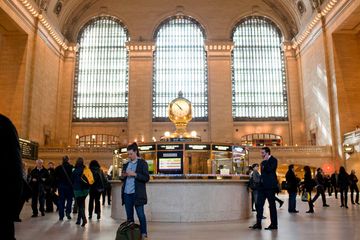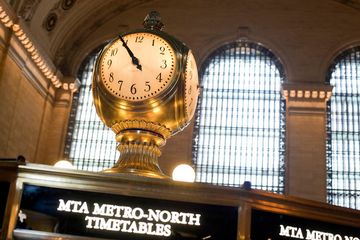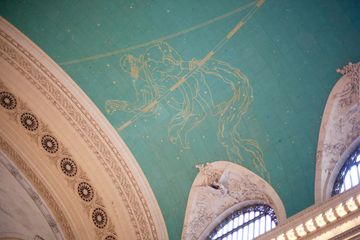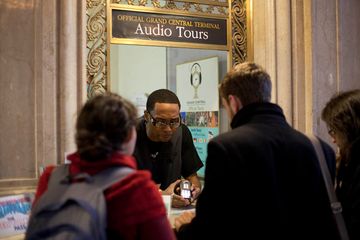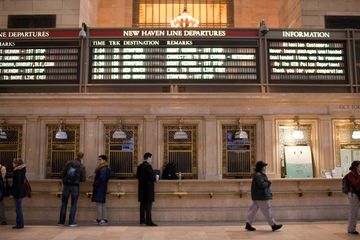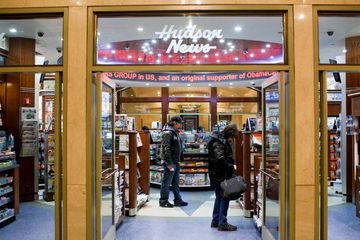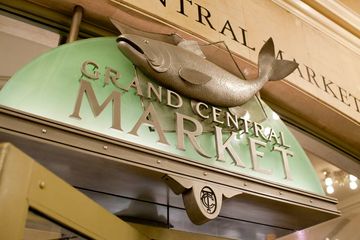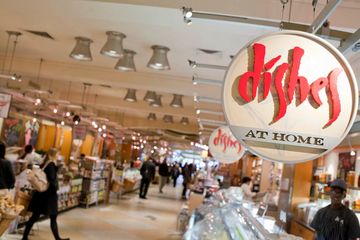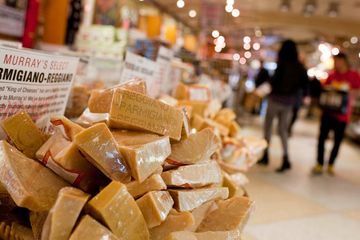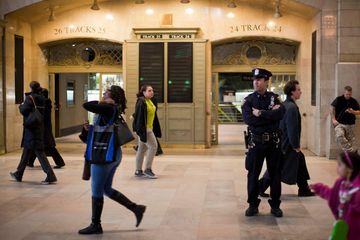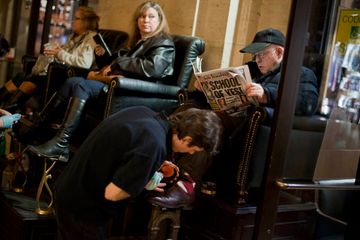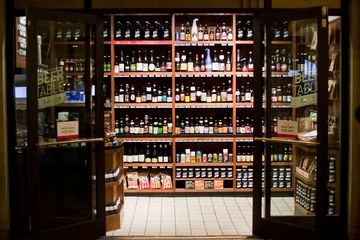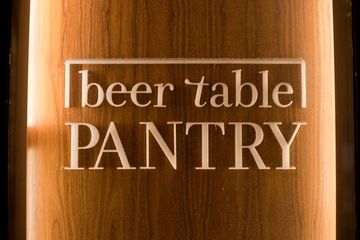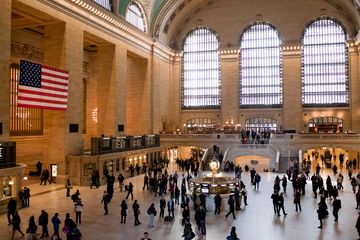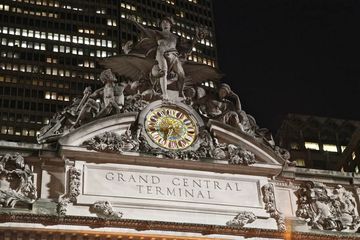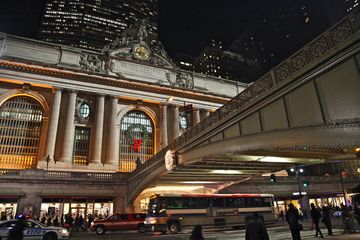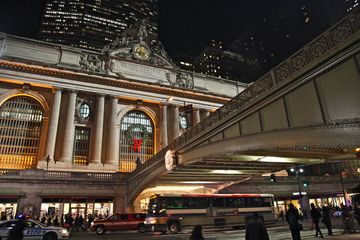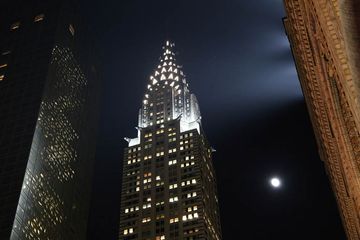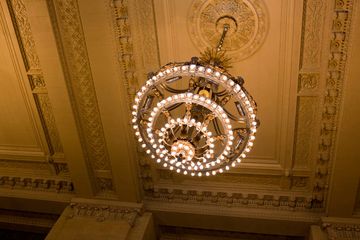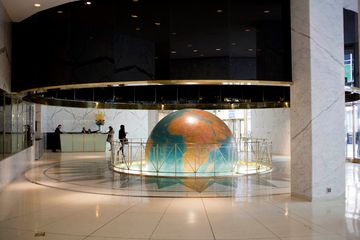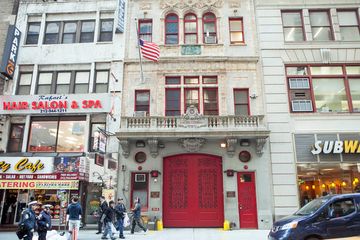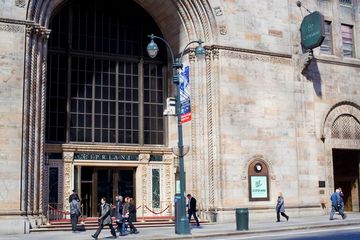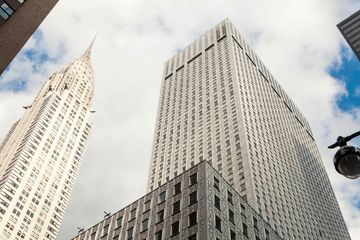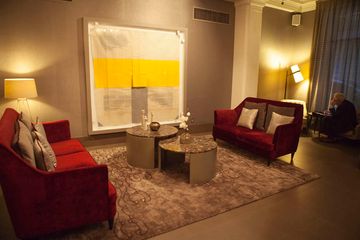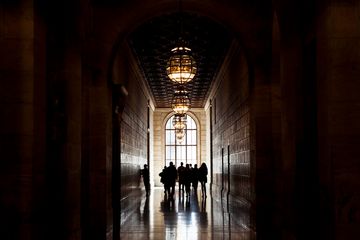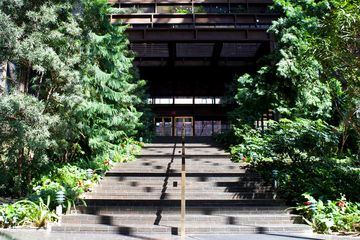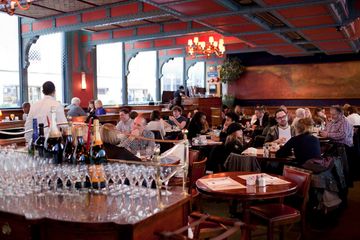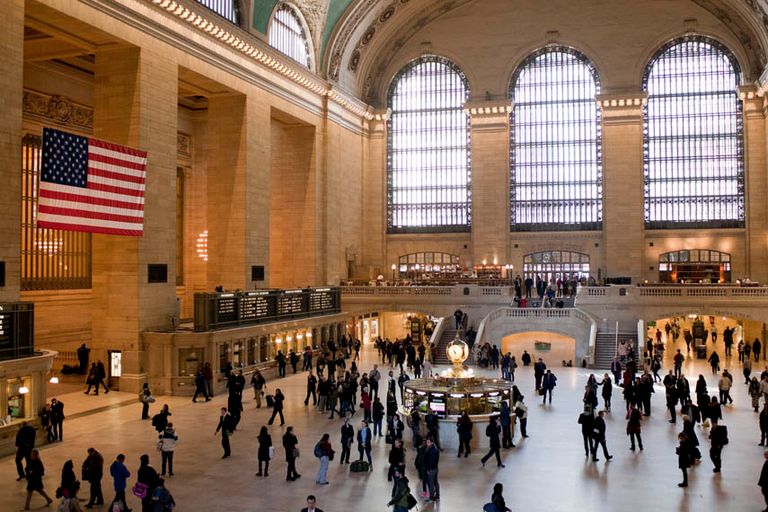
Enormous, vaulted, well-lit, intricately worked, marble, historic – this masterpiece of a train station is positively exquisite. Constructed atop the footprint of two previous stations, Grand Central opened its doors in 1913 and immediately became a center of gravity for the city. Soon thereafter, a mini-city was built to cater to the traffic coming through the terminal, and later on, portions of the building were used as television studios, art galleries, and sports clubs. In 1947, during the station's apex, roughly sixty-five million people passed through the station. Today, commuters are able to dine in its fine restaurants and other eateries, or shop in the numerous retail businesses, gift shops and boutiques, visit the offshoot of the New York Transit Museum and wander down the aisle of the Grand Central Food Hall.
A little more than half way through its history, plans were being discussed to build atop the terminal or to demolish it for other purposes. It was Jackie Kennedy Onassis, however, who can claim responsibility for having initiated the process of bringing the station back to its original splendor in the 1970s. In a press conference at the famed Oyster Bar in Grand Central, she remarked, "If we don't care about our past, we can't have very much hope for our future." History has smiled on that statement, as the station remains one of New York's grandest buildings and most stunning landmarks.
